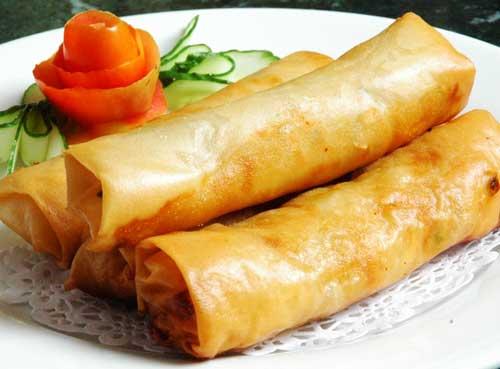January 1st on the lunar calendar is the Spring Festival in China, a time to say good-bye to the previous year, and usher in the new. The festival begins on December 23rd of the lunar calendar and lasts until January 15th.
During the Spring Festival, the Chinese pay a lot of attention on the food prepared. They prepare a lot of dishes for a meal. Some food has special meaning, and some even has a story.
December 23rd on the lunar calendar is the "junior" New Year, the beginning of the Spring Festival celebrations. On this day, many people eat 'zao' candy. 'Zao' means kitchen fireplace, and zao candy is made of glutinous millet and sprouted wheat. It's thought to seal the kitchen god's mouth and encourage him to say only good things about the family when he reports back to the Jade Emperor in heaven.
Dec 30th is New Year's Eve, and it is a time when families get together to have dinner. The dishes are rich and people express their wishes through the foods they prepare. First, the dishes prepared should be in even number, never in odd, because odd means difficulties in the coming year. Second, fish and hotpots are two "auspicious foods" to have at the dinner table. Fish is a homophone to the word "surplus" in Chinese. So it is a good omen to leave the bones, head and tail intact, symbolizing a good beginning and end in the coming year. A steaming hot pot means prosperity and growth. Third, people having chicken for dinner is lucky, as the word chicken is a homophone for "accumulate" in Chinese. "Nian gao", or "New Year Cake" is a sweet sticky brown cake made of rice flour and sugar. In Chinese, "gao" is a homonym for "high", and "nian" means "year". "Nian gao" is a homonym for "higher each year" and symbolizes improvement in life year by year. Their sweetness symbolizes a rich, sweet life and the round shape signifies family reunion. "Spring rolls" are also popular. They symbolize wealth, because their shape is similar to gold bars. When having spring rolls, people eat the entire roll from one end to the other, symbolizing that everything in the coming year will end in success.
In Northern China, the most important New Year's food is dumplings. They symbolize the New Year and the old year meeting in the first hour of the day. The shape of a dumpling looks like a gold ingot-money in ancient China, which expresses a wish for a rich year. Sometimes, candies are stuffed inside the dumplings as a wish for a sweet life; and a sanitized coin may be placed in one of the dumplings. Whoever bites the coin will have good fortune in the coming year.
According to tradition in northern china, people sacrifice pork, mutton, chicken, duck and red carp to Mammon on Jan 2nd, and have 'gold ingot soup' or wonton soup, at noon, for good fortune in the coming year.
Jan 7th is the "Day for Human Beings", and people in Southern china eat "Seven-treasure Porridge", which is made of seven different vegetables, in order to dispel evil and treat many different illnesses.
People eat "tang yuan" during the Lantern Festival on lunar Jan 15th. Tang yuan is round and made of sticky rice flour filled with sweet or savory stuffing. It symbolizes family unity, completeness and happiness.
Sugar and nuts are also necessary for the Spring Festival. Generally speaking, sugar, melon seeds, earthnuts, dried persimmon cakes, oranges and apples should be prepared. Sugar symbolizes "sweetness" in the New Year; melon seeds, "many descendants"; earthnuts, "health and long life"; dried persimmon cakes, "achieve what one wishes"; oranges, "luck and wealth" and apples, "safety". Another special snack in northern China is the "Sugar-coated Haw", a sweet and sour taste that symbolizes family unity and happiness.

Spring rolls
Spring Rolls is a unique pan-Asian dining experience that offers sophisticated style and high quality at value prices.
we recommend:
